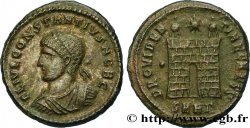Live auction - bpv_715179 - TRAJANUS Tétradrachme syro-phénicien
You must signin and be an approved bidder to bid, LOGIN TO BID. Accounts are subject to approval and the approval process takes place within 48 hours. Do not wait until the day a sale closes to register. Clicking on "BID" constitutes acceptance of the terms of use of cgb.fr private live auctions.
Bids must be placed in whole Euro amounts only. The sale will start closing at the time stated on the item description; any bids received at the site after the closing time will not be executed. Transmission times may vary and bids could be rejected if you wait until the last second. For further information check the Live auction FAQ
All winning bids are subject to a 18% buyer’s fee.
All winning bids are subject to a 18% buyer’s fee.
| Estimate : | 600 € |
| Price : | 340 € |
| Maximum bid : | 340 € |
| End of the sale : | 06 September 2022 15:01:02 |
| bidders : | 2 bidders |
Type : Tétradrachme syro-phénicien
Date: 98-99
Mint name / Town : Tyr, Phénicie
Metal : silver
Diameter : 26,5 mm
Orientation dies : 12 h.
Weight : 14,91 g.
Rarity : R3
Coments on the condition:
Exemplaire sur un flan large bien centré des deux côtés avec les grènetis visibles. Beau buste de Trajan avec l’égide bien visible. Revers bien venu à la frappe. Belle patine gris superficielle avec des reflets dorés
Catalogue references :
Obverse
Obverse description : Buste lauré de Trajan à droite avec l’égide sur l’épaule gauche (O*4).
Obverse legend : AUTOKR KAIS NER TRAIANOS SEB GERM (Autokrator Kaisar Nerua Traianos Sebastos Germanikos)
Obverse translation : (L'empereur césar Nerva Trajan auguste germanique).
Reverse
Reverse description : Aigle debout de face sur un foudre, tournée à gauche, les ailes déployées, la tête tournée à droite, une couronne dans son bec.
Reverse legend : DHMARC/ EX - UPAT B (Dhmarcikhs Exousias Upatos B)
Reverse translation : (Puissance tribunitienne, consul pour la deuxième fois).
Commentary
Rubans de type 3. Ce type, attribué par Michel Prieur à Tyr est aussi parfois attribué à l’atelier d’Antioche, en particulier par Richard McAlee.








 Report a mistake
Report a mistake Print the page
Print the page Share my selection
Share my selection Ask a question
Ask a question Consign / sell
Consign / sell
 Full data
Full data















